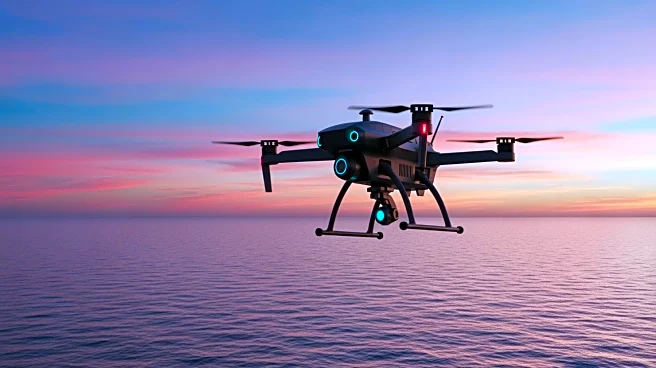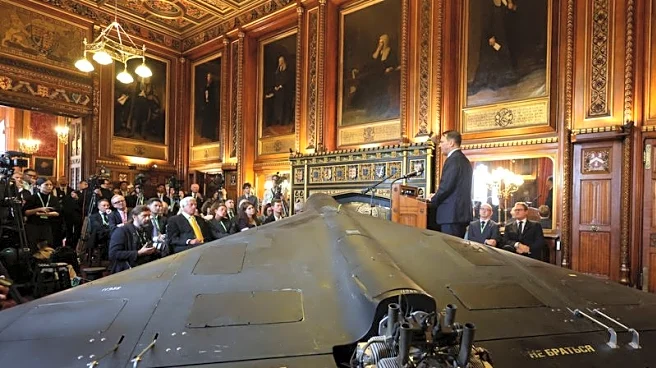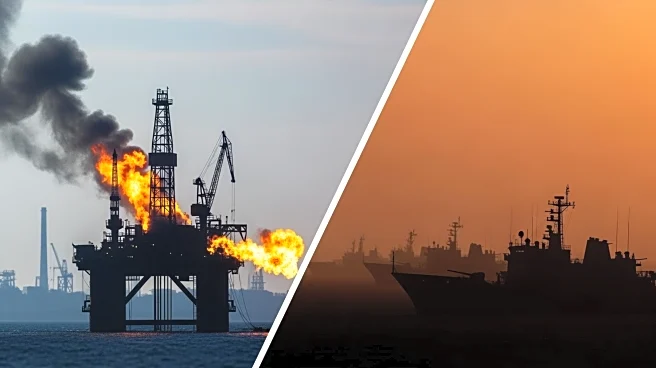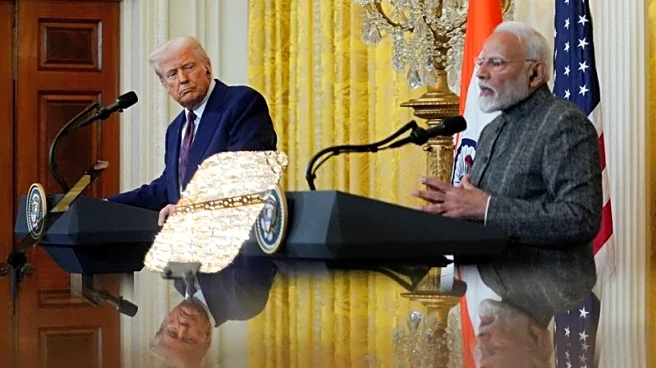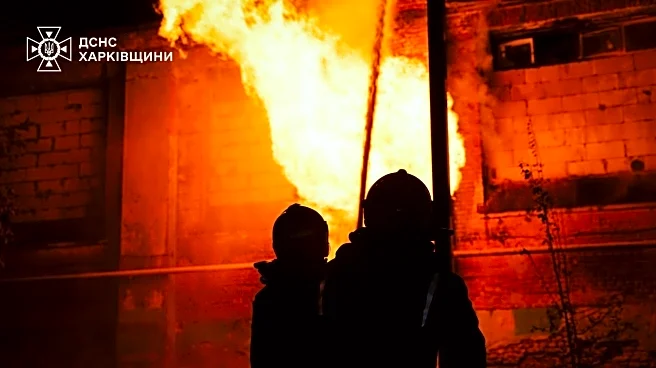What's Happening?
Maj. Gen. James Bartholomees, commanding general of the 25th Infantry Division, has emphasized the need for the U.S. Army to acquire drones similar to the Iranian-designed Shahed-136, which are currently
being mass-produced in Russia. These long-range, expendable drones are seen as crucial for future contingencies in the Indo-Pacific theater. The Shahed-136, known for its cost-effectiveness and ease of production, has become a primary weapon for Russia in its daily bombardment of Ukraine. Bartholomees highlighted the U.S. military's lag in adopting such drones and stressed the importance of rapid development and deployment to support regional allies and protect maritime spaces. The 25th Infantry Division is actively working on building formations ready to integrate these capabilities, including a launched effects company within its artillery unit.
Why It's Important?
The acquisition of Shahed-136 like drones is significant for the U.S. Army as it addresses the need for cost-effective, long-range strike capabilities in the Indo-Pacific region. These drones could enhance the defense of U.S. allies and partners, providing a strategic advantage in maritime security and territorial protection. The urgency to develop such capabilities is underscored by the rapid pace of drone innovation observed in the Ukraine conflict, where both Russian and Ukrainian forces have demonstrated the effectiveness of these drones. The U.S. military's ability to catch up in this area is crucial for maintaining a competitive edge against adversaries like China, which poses a potential existential threat with its larger arsenal of long-range drones.
What's Next?
The U.S. Army plans to accelerate the development and testing of long-range, expendable drones, with the 25th Infantry Division leading the effort. Collaboration with the Marine Corps and Air Force is expected to enhance the integration of these capabilities. The Army's divisional innovation labs are focusing on creating a nascent long-range one-way attack capability, with the potential for mass production similar to Russia's efforts. The urgency expressed by senior officers like Bartholomees and Lt. Gen. Charles Costanza may drive faster adoption and deployment of these drones, ensuring the U.S. military can effectively counter threats in the Indo-Pacific region.
Beyond the Headlines
The push for Shahed-136 like drones reflects broader strategic shifts in military technology and defense policy. The focus on cost-effective, long-range drones highlights the evolving nature of warfare, where traditional high-cost weapons systems are supplemented by more adaptable and scalable solutions. This development also raises ethical and legal considerations regarding the use of drones in conflict, particularly in terms of targeting and collateral damage. The integration of AI and self-guidance in new drone models further complicates these issues, necessitating ongoing discussions about the implications of autonomous weapons systems.
